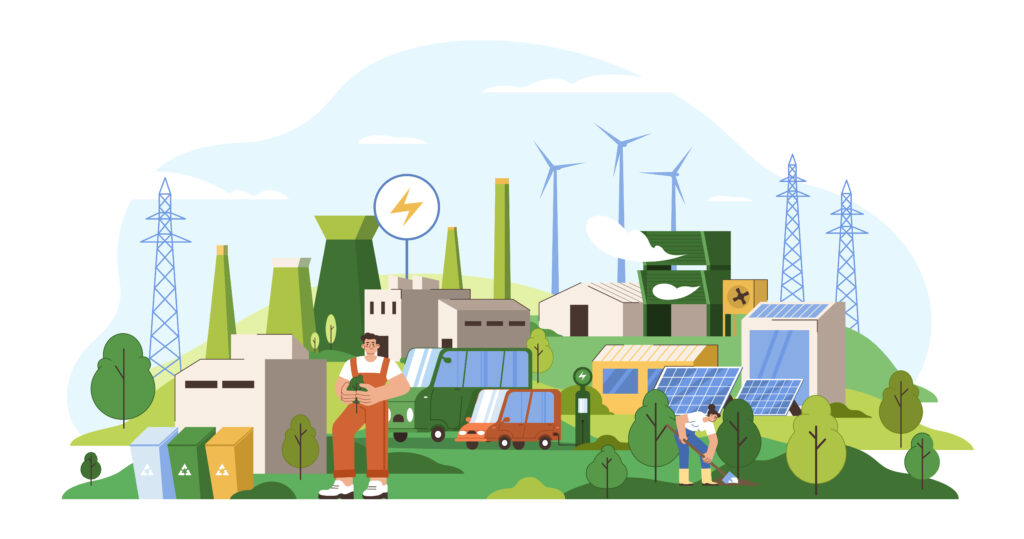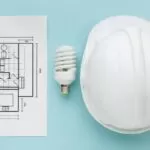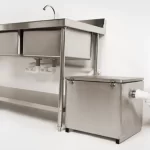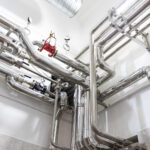As a business owner in Texas, maximizing the efficiency of your building’s mechanical, electrical, and plumbing (MEP) systems is crucial for sustainability and cost savings. One of the most effective ways to achieve this is through the strategies for renewable energy integration. The state of Texas, with its vast land and abundant natural resources, provides an excellent environment for harnessing renewable energy. In this article, we will explore the strategies that can help you optimize the integration of renewable energy into your MEP engineering systems.
Renewable energy integration is paramount for building owners in Texas, considering the state’s commitment to sustainable practices. Texas has long been a leader in renewable energy production, particularly in wind and solar power. By embracing these resources, business owners can not only contribute to the state’s environmental goals but also benefit from long-term cost savings.
Table of Contents
Assessing the Viability of Solar Power Integration
One of the first steps in optimizing renewable energy integration is exploring the viability of solar power for your building in Texas. With its abundant sunlight, Texas is an ideal location for solar panel installations. To achieve this, conduct a thorough assessment of your building’s rooftop space, orientation, and potential shading issues. Investing in solar panels can provide a reliable source of clean energy, reducing your dependence on traditional power sources and lowering electricity bills.
Solar power integration involves meticulous planning and a tailored approach to meet the specific needs of your building. Collaborate with experienced solar engineers who can design a system that maximizes energy production while ensuring the longevity and durability of the installation. By unlocking the potential of solar energy, you not only contribute to a greener environment but also create a sustainable and cost-effective energy solution for your business.
Harnessing Wind Energy for Sustainable Power Generation
Texas is well-known for its vast landscapes, making it an ideal location for harnessing wind energy. As a business owner, exploring the integration of wind turbines can be a game-changer for your MEP engineering systems. Wind power is a thriving industry in Texas, and strategically placing turbines on your property can unlock a new avenue for sustainable power generation.
To achieve optimal results, a detailed analysis of wind patterns, terrain, and local regulations is necessary. Work closely with wind energy experts who can guide you through the process of selecting and installing turbines that align with your building’s energy needs. By embracing wind energy, you not only elevate your commitment to sustainability but also contribute to the overall growth of the renewable energy sector in Texas.
Implementing Energy-Efficient HVAC Systems
Elevating Efficiency with Advanced HVAC Technologies
When optimizing renewable energy integration, attention to the HVAC (Heating, Ventilation, and Air Conditioning) system is crucial. Upgrading to energy-efficient HVAC technologies not only reduces your building’s carbon footprint but also enhances overall operational efficiency. Begin by exploring advanced HVAC systems that boast high energy efficiency ratings and are specifically designed for the Texas climate.
Investing in modern HVAC technologies can streamline your building’s energy consumption, ensuring that heating and cooling systems operate at peak performance. This optimization leads to significant cost savings over time. Choose systems that are meticulous in their design, catering to the unique environmental challenges faced by businesses in Texas. By delving into energy-efficient HVAC solutions, you create a comfortable and sustainable indoor environment for your occupants.
Maximizing Efficiency through Smart Building Automation
To achieve the utmost efficiency in renewable energy integration, consider implementing smart building automation systems. These systems optimize energy consumption by seamlessly controlling lighting, HVAC, and other critical building functions. For a business owner in Texas, where weather conditions can vary dramatically, smart building automation is paramount for achieving energy savings and maintaining occupant comfort.
Smart building technologies empower you to achieve precise control over your MEP systems. By embracing automation, you ascend to a level of operational mastery that allows for real-time adjustments based on occupancy, weather conditions, and energy demand. This not only maximizes efficiency but also ensures that your building is adaptable to the dynamic nature of the Texas climate. Implementing these strategies will revolutionize your approach to energy management, driving long-term sustainability and operational excellence.

Incorporating Energy Storage Solutions
Unlocking Reliability with Battery Storage
In the realm of renewable energy integration, energy storage solutions play a pivotal role in ensuring a continuous and reliable power supply. Texas, with its occasional extreme weather events, emphasizes the need for robust energy storage systems. Battery storage, in particular, can unlock a new level of reliability for your building’s energy infrastructure.
Investing in battery storage allows you to capture excess energy generated during peak times and store it for later use. This safeguarding mechanism ensures that your building remains powered even during grid outages or periods of low renewable energy production. By harnessing the potential of energy storage, you not only enhance the resilience of your MEP engineering systems but also contribute to the overall stability of the Texas energy grid.
Grid-Tied vs. Off-Grid Systems: Choosing the Right Approach
When delving into energy storage solutions, consider whether a grid-tied or off-grid system aligns with your business objectives. A grid-tied system allows your building to remain connected to the local utility grid while benefiting from energy storage capabilities. On the other hand, an off-grid system provides complete independence from the grid, relying solely on stored energy.
Choosing the right approach requires a meticulous assessment of your building’s energy needs, budget considerations, and long-term sustainability goals. Collaborate with energy experts who can guide you through the decision-making process, ensuring that your chosen energy storage solution aligns with the unique requirements of your business in Texas.
Government Incentives and Regulatory Compliance
Navigating Incentives for Renewable Energy Integration
As a business owner in Texas, exploring available government incentives for renewable energy integration is a strategic move. The state offers various incentives, tax credits, and rebates to encourage businesses to adopt sustainable practices. These incentives can significantly offset the initial costs of implementing renewable energy solutions.
To maximize your benefits, thoroughly research and understand the available incentives at the federal, state, and local levels. Engage with energy consultants who specialize in navigating the complex landscape of incentives and ensure that your business takes full advantage of the financial benefits. By achieving a thorough understanding of available incentives, you not only drive cost-effectiveness but also contribute to the larger goal of promoting renewable energy adoption in Texas.
Ensuring Regulatory Compliance for Long-Term Success
In the process of optimizing renewable energy integration, compliance with regulations is paramount. Texas has specific regulations governing the installation and operation of renewable energy systems. Ensuring that your project aligns with these regulations is essential for long-term success and avoiding potential legal issues.
Work closely with legal and regulatory experts who specialize in the Texas energy landscape. This collaboration will streamline the permitting process and help you navigate the intricacies of compliance. By safeguarding your project against regulatory challenges, you not only achieve peace of mind but also position your business as a responsible contributor to the sustainable development of the Texas energy sector.
Monitoring and Continuous Improvement
Real-Time Monitoring for Performance Optimization
Once your renewable energy integration project is operational, implementing a robust monitoring system is critical. Real-time monitoring allows you to track the performance of your renewable energy systems, identify potential issues, and optimize energy production. For a business owner in Texas, where environmental conditions can be dynamic, staying informed about the performance of your MEP engineering systems is key to long-term success.
Invest in monitoring technologies that provide detailed insights into energy production, consumption patterns, and system efficiency. This meticulous approach allows you to make data-driven decisions, ensuring that your renewable energy integration continues to meet the evolving needs of your building. By embracing real-time monitoring, you not only achieve operational excellence but also position your business as a leader in sustainable practices in Texas.
Continuous Improvement Strategies for Sustainable Growth
Achieving long-term success with renewable energy integration requires a commitment to continuous improvement. Regularly evaluate the performance of your systems, explore new technologies, and adapt your strategies to emerging trends. Engage with energy experts who can provide insights into evolving best practices and help you stay at the forefront of renewable energy advancements.
Implementing continuous improvement strategies ensures that your building remains at the cutting edge of sustainable practices. By thriving in this ever-evolving landscape, you not only contribute to the growth of renewable energy in Texas but also position your business as a forward-thinking and environmentally conscious leader in your industry.
Conclusion
In conclusion, as a business owner in Texas, optimizing strategies of renewable energy integration in MEP engineering is a great move that aligns with the state’s commitment to sustainability. From exploring solar and wind power to upgrading HVAC systems, incorporating energy storage solutions, navigating government incentives, and embracing continuous improvement, there are numerous avenues to unlock the potential of renewable energy for your building. By implementing these strategies, you not only contribute to a greener future but also position your business for long-term success in the dynamic landscape of the Texas energy sector.




